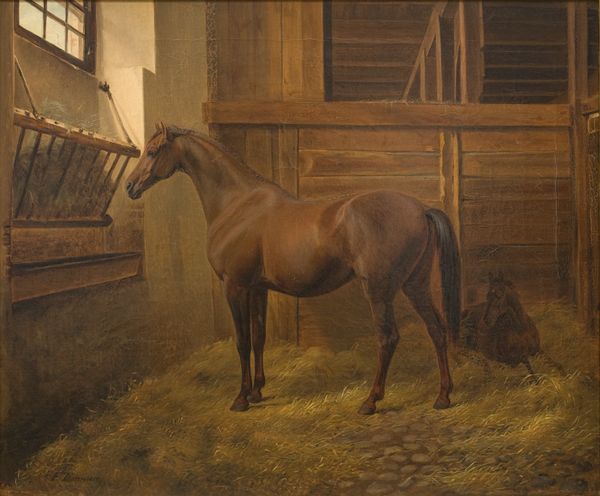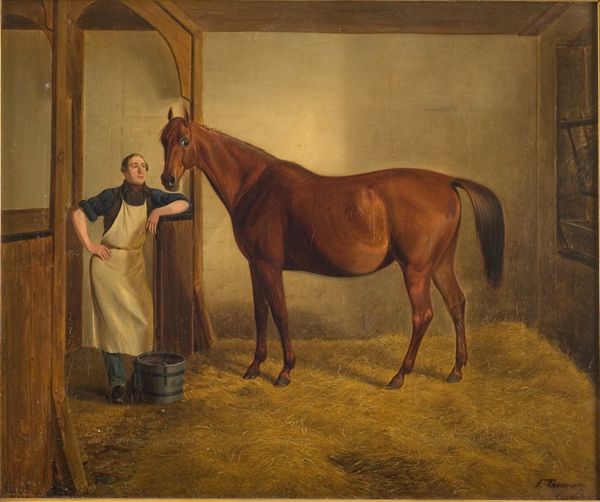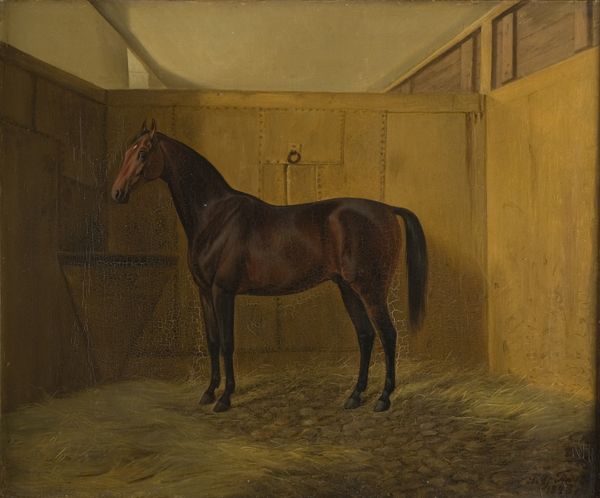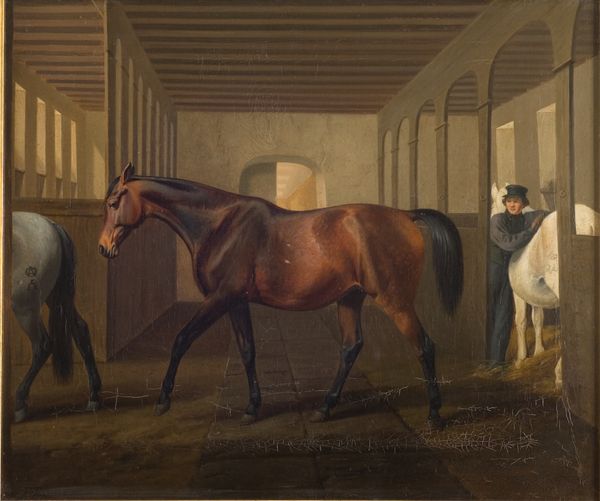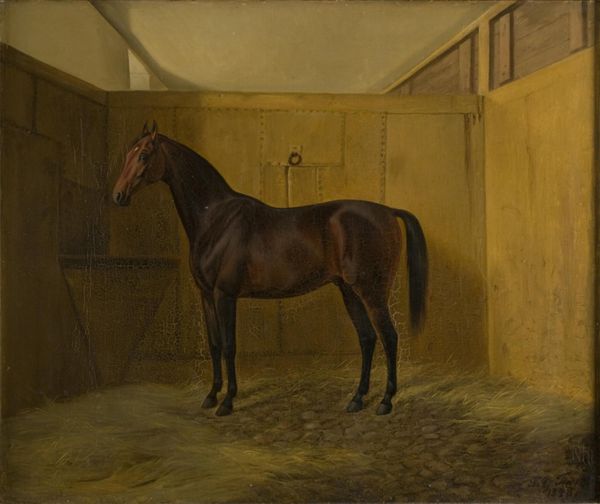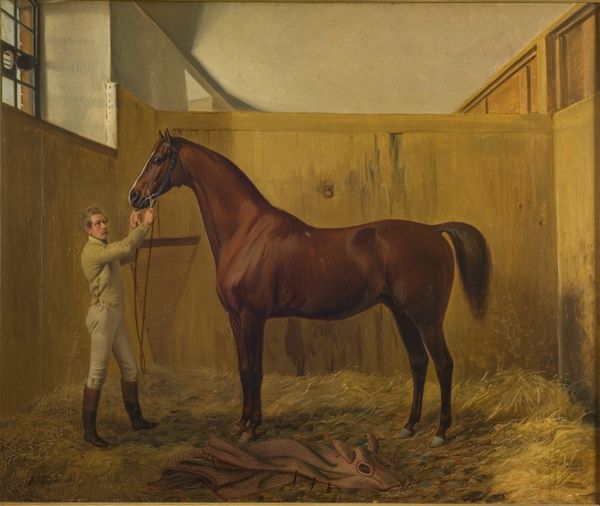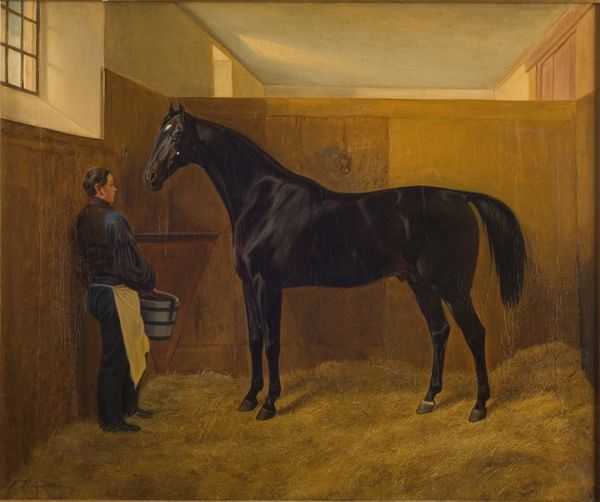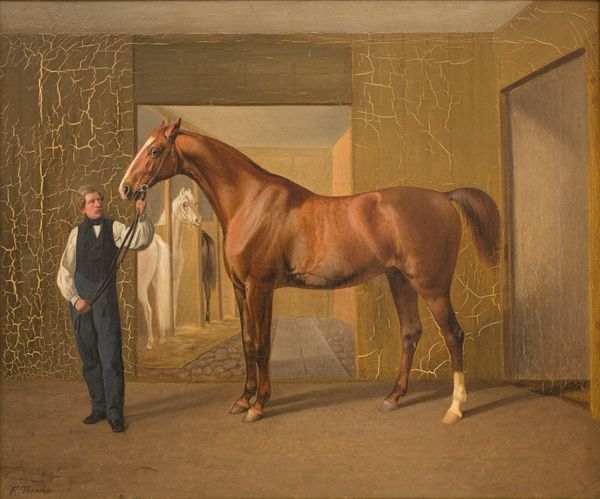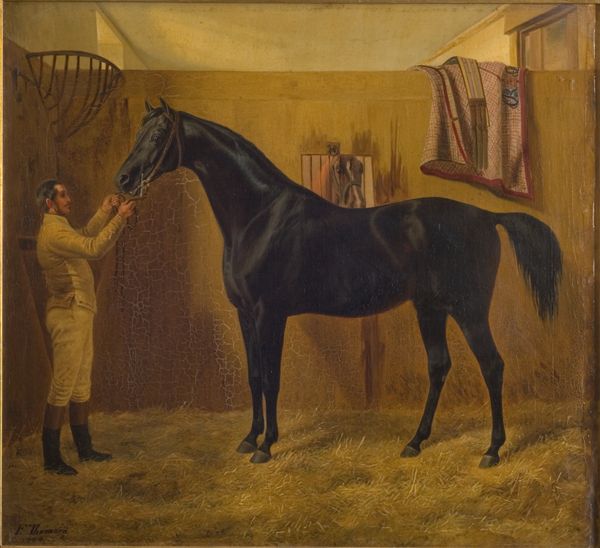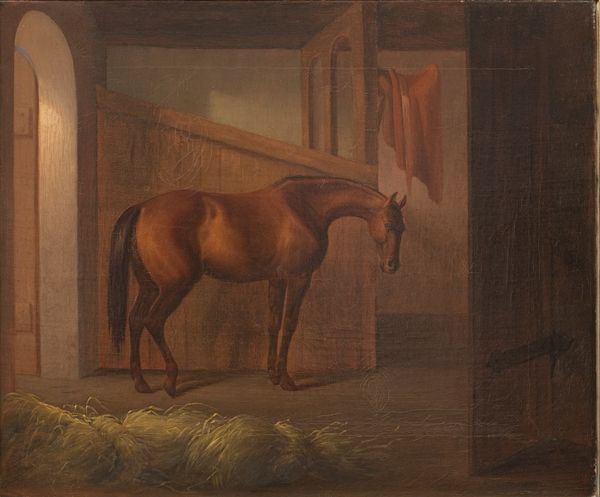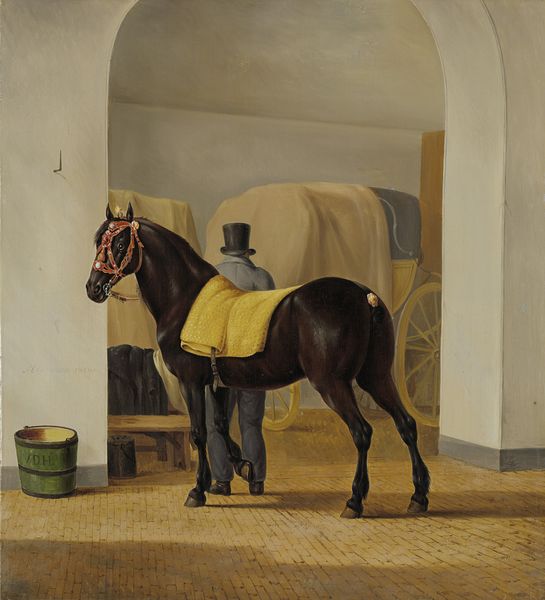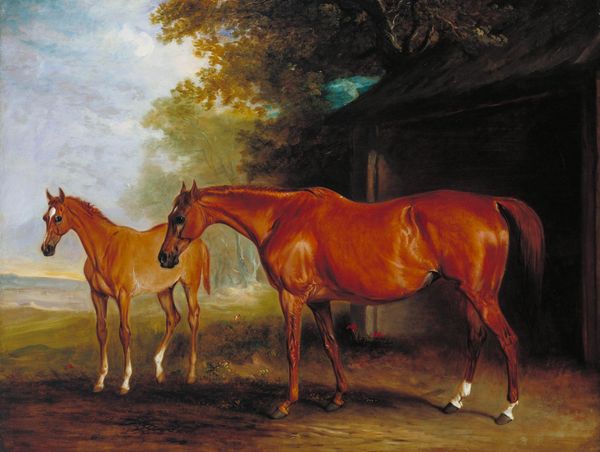
canvas
#
gouache
#
impressionist painting style
#
possibly oil pastel
#
oil painting
#
canvas
#
coffee painting
#
underpainting
#
painting painterly
#
watercolour illustration
#
watercolor
#
warm toned green
Dimensions: 45 cm (height) x 55 cm (width) (Netto)
Curator: Alright, let's delve into this artwork, "La Danseuse," painted in 1847 by Fritz Thomsen. It's currently housed here at the SMK, rendered beautifully on canvas. Editor: My first impression? A moment of quiet connection, a portrait of gentle servitude and equine grace. There's such a soft glow of understanding passing between the horse and its caretaker. Curator: Indeed. Thomsen's focus in "La Danseuse" moves beyond mere portraiture. He captures a moment deeply embedded in 19th-century societal values regarding class and labour through a depiction of horses’ importance within a deeply divided Danish rural environment. Editor: The man seems almost subservient, right? The warm, earthy tones—that hay-strewn floor!—pull me in. It is the animal that commands the attention. I find myself pondering the artist's relationship to these elements—the labor, the status... How might we consider the dancer depicted in its title? Curator: Well, given the social hierarchies, ‘La Danseuse’ is indeed a pointed, probably ironic choice, elevating the horse to a position of respect typically reserved for aristocracy, while those responsible for animal maintenance occupied the lowest rung of society. What Thomsen offers with this depiction may be a meditation on the way hard work should perhaps garner us social praise and admiration as opposed to being taken for granted. Editor: Absolutely. The lighting in this piece! See how the light caresses the horse's coat? There is a lot of skill that brings the subjects of his work to life but still casts a critical lens on their social environments. Do you see parallels in his approach and his own status within the Royal Academy, the established structures that controlled and promoted artistic expression in the early 19th century? Curator: That’s a really interesting point. I had always thought that there was an aspect of personal criticism aimed at the power structures within these Royal institutions that would force artists into these displays. By representing those considered on the lower rung as worthy of admiration he subverts established hierarchical thought, Editor: So beautifully articulated. It’s these unspoken, emotional currents flowing through the canvas that make it resonate, centuries later. Curator: Definitely. And considering Thomsen's own somewhat subversive place within artistic circles, the painting reads as less documentation, more declaration of self and values. Editor: A fascinating dialogue, truly! Thanks for sharing your insight!
Comments
No comments
Be the first to comment and join the conversation on the ultimate creative platform.
